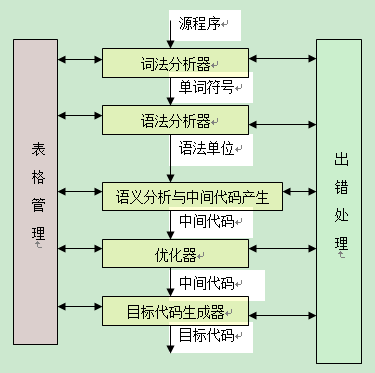可以将文章内容翻译成中文,广告屏蔽插件可能会导致该功能失效(如失效,请关闭广告屏蔽插件后再试):
问题:
I'm converting our app over to use the Photos Framework of iOS8, the ALAsset framework is clearly a second class citizen under iOS8.
I'm having a problem is that our architecture really wants an NSURL that represents the location of the media on "disk." We use this to upload the media to our servers for further processing.
This was easy with ALAsset:
ALAssetRepresentation *rep = [asset defaultRepresentation];
self.originalVideo = rep.url;
But I'm just not seeing this ability in PHAsset. I guess I can call:
imageManager.requestImageDataForAsset
and then write it out to a temp spot in the file system but that seems awfully heavyweight and wasteful, not to mention potentially slow.
Is there a way to get this or am I going to have refactor more of my app to only use NSURLs for iOS7 and some other method for iOS8?
回答1:
If you use [imageManager requestAVAssetForVideo...], it'll return an AVAsset. That AVAsset is actually an AVURLAsset, so if you cast it, you can access it's -url property.
I'm not sure if you can create a new asset out of this, but it does give you the location.
回答2:
SWIFT 2.0 version
This function returns NSURL from PHAsset (both image and video)
func getAssetUrl(mPhasset : PHAsset, completionHandler : ((responseURL : NSURL?) -> Void)){
if mPhasset.mediaType == .Image {
let options: PHContentEditingInputRequestOptions = PHContentEditingInputRequestOptions()
options.canHandleAdjustmentData = {(adjustmeta: PHAdjustmentData) -> Bool in
return true
}
mPhasset.requestContentEditingInputWithOptions(options, completionHandler: {(contentEditingInput: PHContentEditingInput?, info: [NSObject : AnyObject]) -> Void in
completionHandler(responseURL : contentEditingInput!.fullSizeImageURL)
})
} else if mPhasset.mediaType == .Video {
let options: PHVideoRequestOptions = PHVideoRequestOptions()
options.version = .Original
PHImageManager.defaultManager().requestAVAssetForVideo(mPhasset, options: options, resultHandler: {(asset: AVAsset?, audioMix: AVAudioMix?, info: [NSObject : AnyObject]?) -> Void in
if let urlAsset = asset as? AVURLAsset {
let localVideoUrl : NSURL = urlAsset.URL
completionHandler(responseURL : localVideoUrl)
} else {
completionHandler(responseURL : nil)
}
})
}
}
回答3:
If you have a PHAsset, you can get the url for said asset like this:
[asset requestContentEditingInputWithOptions:editOptions
completionHandler:^(PHContentEditingInput *contentEditingInput, NSDictionary *info) {
NSURL *imageURL = contentEditingInput.fullSizeImageURL;
}];
回答4:
Use the new localIdentifier property of PHObject. (PHAsset inherits from this).
It provides similar functionality to an ALAsset URL, namely that you can load assets by calling the method
+[PHAsset fetchAssetsWithLocalIdentifiers:identifiers options:options]
回答5:
All the above solutions won't work for slow-motion videos. A solution that I found handles all video asset types is this:
func createFileURLFromVideoPHAsset(asset: PHAsset, destinationURL: NSURL) {
PHCachingImageManager().requestAVAssetForVideo(self, options: nil) { avAsset, _, _ in
let exportSession = AVAssetExportSession(asset: avAsset!, presetName: AVAssetExportPresetHighestQuality)!
exportSession.outputFileType = AVFileTypeMPEG4
exportSession.outputURL = destinationURL
exportSession.exportAsynchronouslyWithCompletionHandler {
guard exportSession.error == nil else {
log.error("Error exporting video asset: \(exportSession.error)")
return
}
// It worked! You can find your file at: destinationURL
}
}
}
回答6:
See this answer here.
And this one here.
In my experience you'll need to first export the asset to disk in order to get a fully accessible / reliable URL.
The answers linked to above describe how to do this.
回答7:
In speking of url from PHAsset, I had once prepared a util func on Swift 2 (although only for playing videos from PHAsset). Sharing it in this answer, might help someone.
static func playVideo (view:UIViewController, asset:PHAsset)
Please check this Answer
回答8:
Just want to post the hidden gem from a comment from @jlw
@rishu1992 For slo-mo videos, grab the AVComposition's
AVCompositionTrack (of mediaType AVMediaTypeVideo), grab its first
segment (of type AVCompositionTrackSegment), and then access its
sourceURL property. – jlw Aug 25 '15 at 11:52
回答9:
Here's a handy PHAsset category:
@implementation PHAsset (Utils)
- (NSURL *)fileURL {
__block NSURL *url = nil;
switch (self.mediaType) {
case PHAssetMediaTypeImage: {
PHImageRequestOptions *options = [[PHImageRequestOptions alloc] init];
options.synchronous = YES;
[PHImageManager.defaultManager requestImageDataForAsset:self
options:options
resultHandler:^(NSData *imageData, NSString *dataUTI, UIImageOrientation orientation, NSDictionary *info) {
url = info[@"PHImageFileURLKey"];
}];
break;
}
case PHAssetMediaTypeVideo: {
dispatch_semaphore_t semaphore = dispatch_semaphore_create(0);
[PHImageManager.defaultManager requestAVAssetForVideo:self
options:nil
resultHandler:^(AVAsset *asset, AVAudioMix *audioMix, NSDictionary *info) {
if ([asset isKindOfClass:AVURLAsset.class]) {
url = [(AVURLAsset *)asset URL];
}
dispatch_semaphore_signal(semaphore);
}];
dispatch_semaphore_wait(semaphore, DISPATCH_TIME_FOREVER);
break;
}
default:
break;
}
return url;
}
@end
回答10:
I had similiar problem with video files, what worked for me was:
NSString* assetID = [asset.localIdentifier substringToIndex:(asset.localIdentifier.length - 7)];
NSURL* videoURL = [NSURL URLWithString:[NSString stringWithFormat:@"assets-library://asset/asset.mov?id=%@&ext=mov", assetID]];
Where asset is PHAsset.




